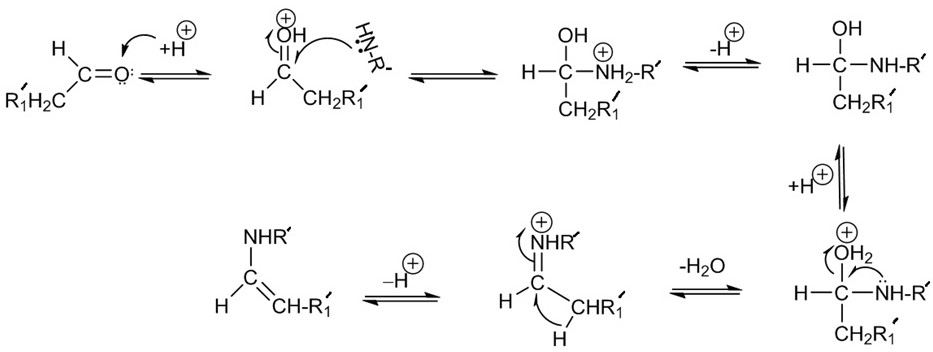Aldehyde nucleophilic addition complexing antibacterial fibers as well as preparation method and application thereof
An antibacterial fiber, aldehyde nucleophilic technology, applied in the field of textiles, can solve the problems of insufficient binding force of textiles, short duration of antibacterial properties, low grafting rate, etc., achieving good technical feasibility and economic value, and industrial large-scale production. Easy, simple and simple processing techniques
- Summary
- Abstract
- Description
- Claims
- Application Information
AI Technical Summary
Problems solved by technology
Method used
Image
Examples
Embodiment
[0047] In this specification, all parts are by weight unless otherwise stated.
[0048] A preparation method of aldehyde nucleophilic addition complexation antibacterial fiber, the fiber to be modified is selected as a raw material, and the sugar unit of the cellulose to be modified contains at least one aldehyde active group;
[0049] like figure 1 As shown, in the present invention, cellulose fibers can be divided into natural cellulose fibers such as cotton, hemp and regenerated cellulose fibers such as Lyocell, Modal fibers, bamboo fibers, cupro fibers and the like. This type of fiber is composed of cellulose, which is a macromolecular polysaccharide composed of glucose, which is insoluble in water and general organic solvents. Its reducing end is easily isomerized to aldehyde (-CHO), which has good reactivity. Additionally, if figure 2 As shown, the secondary hydroxyl groups at the 2 and 3 positions also have strong activity and can be oxidized to aldehyde groups unde...
PUM
 Login to View More
Login to View More Abstract
Description
Claims
Application Information
 Login to View More
Login to View More - Generate Ideas
- Intellectual Property
- Life Sciences
- Materials
- Tech Scout
- Unparalleled Data Quality
- Higher Quality Content
- 60% Fewer Hallucinations
Browse by: Latest US Patents, China's latest patents, Technical Efficacy Thesaurus, Application Domain, Technology Topic, Popular Technical Reports.
© 2025 PatSnap. All rights reserved.Legal|Privacy policy|Modern Slavery Act Transparency Statement|Sitemap|About US| Contact US: help@patsnap.com



